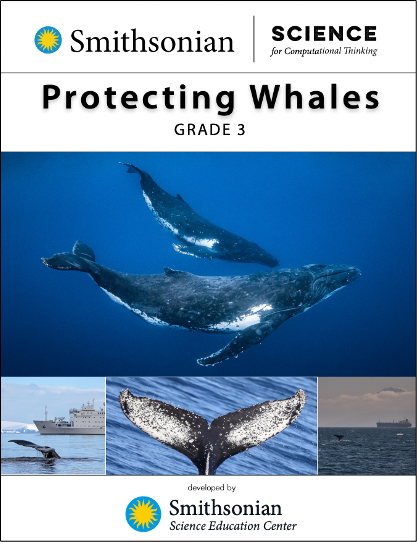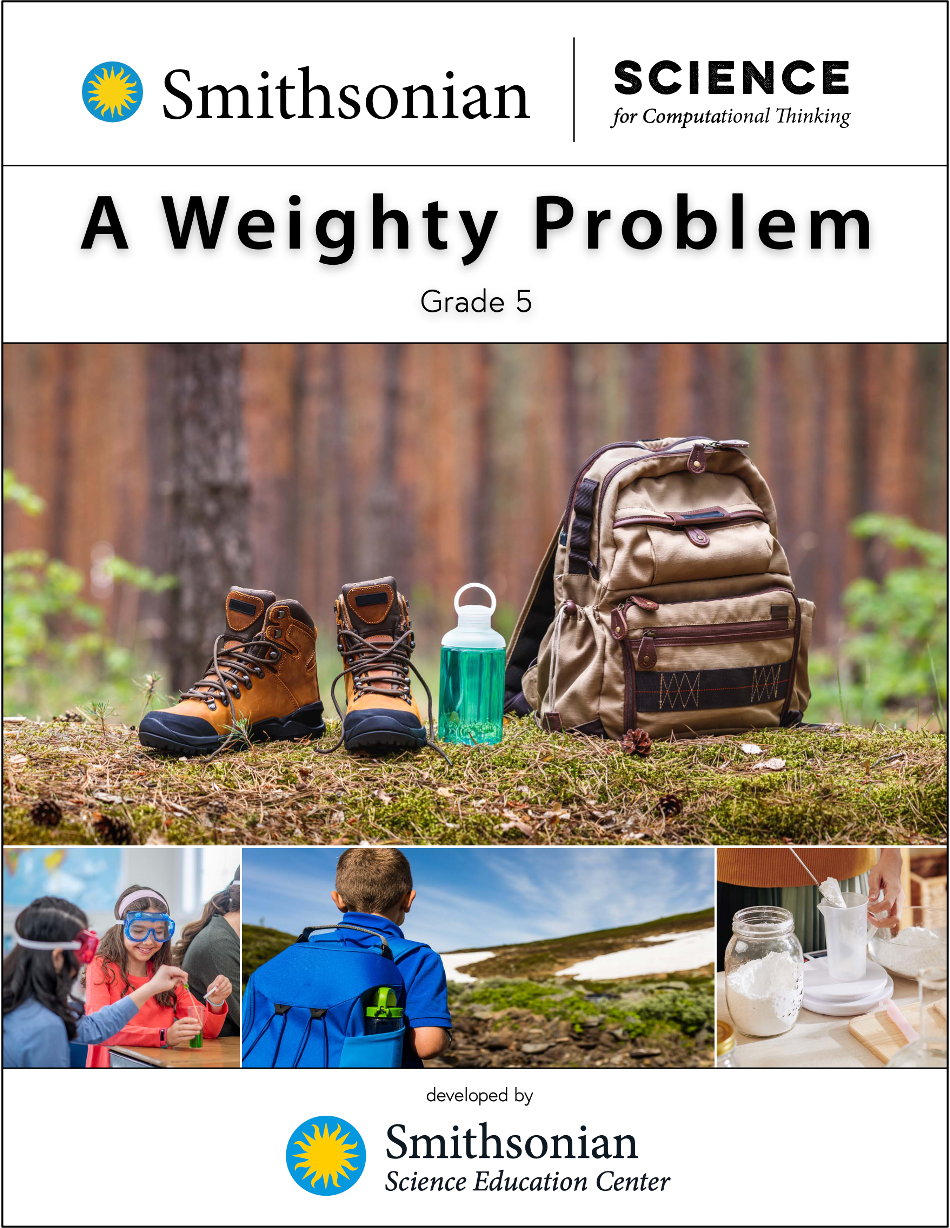computational thinking in Science
Protecting Whales
Take a deep dive into the life of whales! Students investigate the problem of humpback whales getting injured and/or killed along the California coast. Using data gathered from real marine biologist, they use authentic models to understand the problem. This leads students to propose a possible solution. Students are able to then test their solutions using a computer simulation learning about the impact their solution has on whale mortality and the shipping industry.
Smithsonian Science for Computational Thinking provides high-touch to high-tech opportunities for 3rd through 5th grade students to develop and use computational thinking as part of three-dimensional phenomenon- or problem-driven learning experiences. The work that students do is driven by explaining a phenomenon or defining and/or solving a problem. The use of phenomena and problems motivates students and leads to deeper and more transferable knowledge. Students who spend their time explaining phenomena and solving problems related to real-world situations also develop an understanding of the need for and value of the science and engineering in their community. This is fundamental to STEM.
Preliminary research has shown that when these modules are accompanied by professional learning elementary teachers have a better understanding of what computational thinking is and grow in confidence with how it can be integrated in other areas of the curriculum. Professional learning will equip teachers to help their students analyze complex problems and find innovative solutions by applying computational thinking principles in a real-world context. Participants will also learn about the fundamental concepts of computational thinking, including algorithms, data representation, and abstractions. The session will be filled with a combination of hands-on experiences and discussions about how computational thinking can be integrated across the curriculum.
In-person or virtual professional learning is available upon request. Contact Kim@einsteinproject.org.
Curriculum materials for these modules are FREELY available and can be downloaded from the Smithsonian Science Education Center website.
A weighty problem
In this unit, students are faced with the problem of having a backpack that is too heavy. They consider solving the problem by mixing together a powdered drink mix and water in a bottle. Working in groups, students plan and conduct an investigation to gather evidence to support their claim about what happens to the weight of the materials when they are mixed together.



